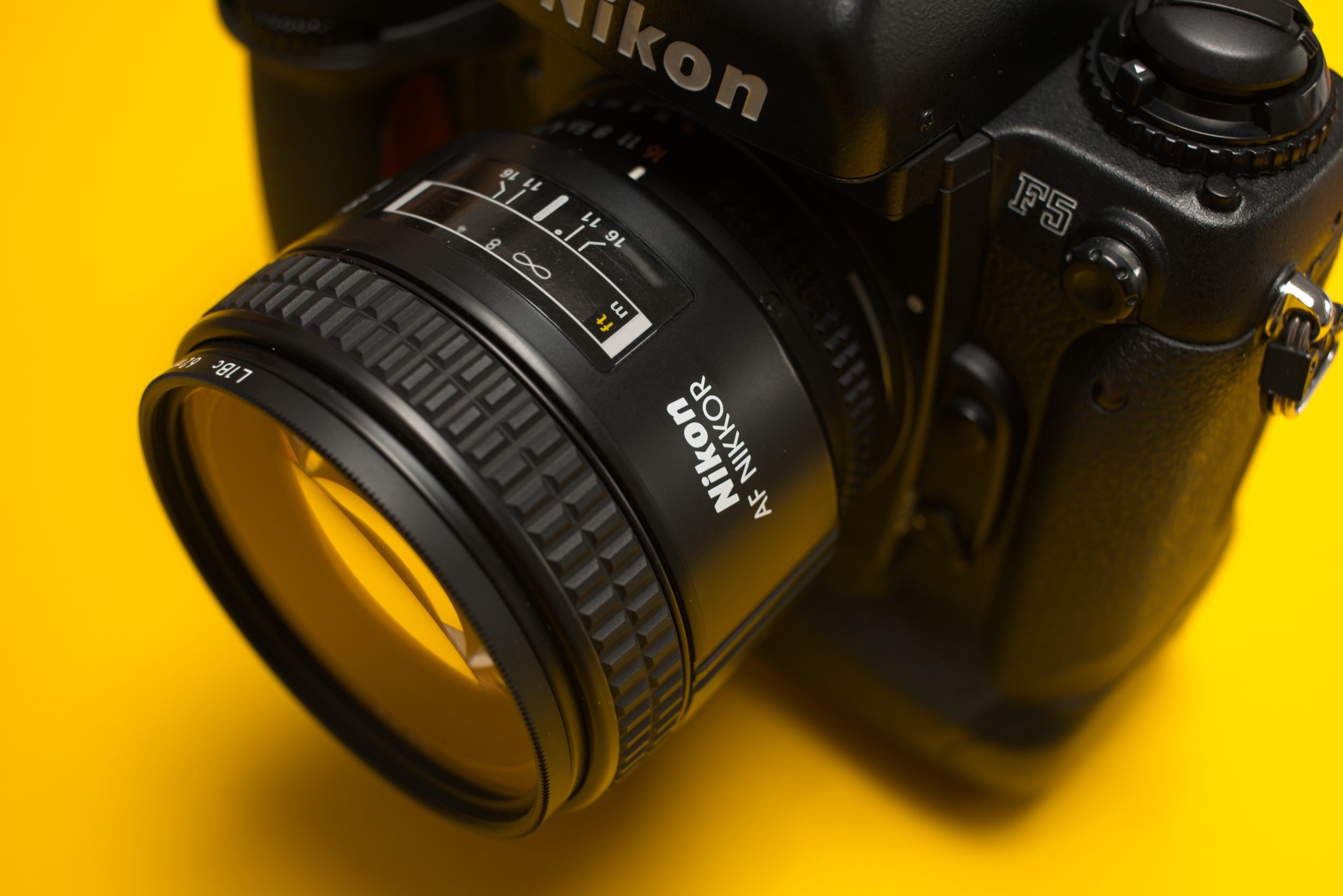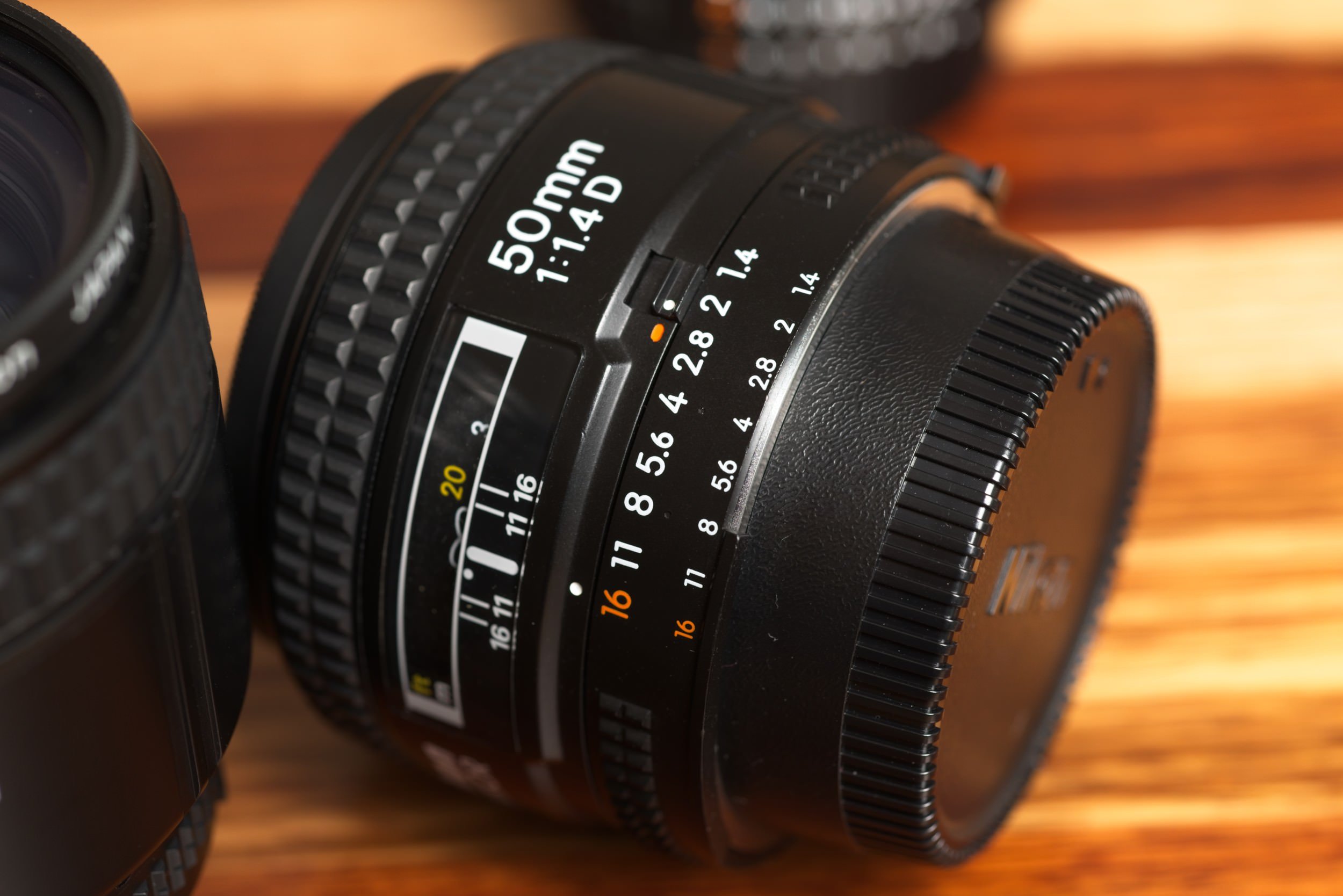Affordable Imaging Performance - Nikon AF-D Prime Lenses
Introduction
Professional lenses cost a lot of money? Wrong!
I’d like to bring a trio of excellent, yet affordable prime lenses for analog and digital Nikon cameras to your attention: The 35mm f/2 AF-D wide angle, the 50mm f/1.4 normal and the 85mm f/1.8 AF-D telephoto.
35mm, 50mm and 85mm - the perfect set of Nikon F primes!
Optical Characteristics
Nikon 35mm f/2 AF-D @f/8, Nikon D700
The 35mm and the 50mm were introduced in 1995 the 85mm in 1994. All three of them were not completely new optical designs but based on previous calculations.
When they came out, the analog workflow was still reigning supreme, and it did not allow for digital distortion correction or chromatic aberration correction in post production. What was captured on film was what people got. This is why these lenses have a unique imaging performance that is rarely found in contemporary lenses.
Nikon 50mm f/1.4 AF-D @f/5.6, Nikon F6, on Kodak Tri-X 400
At large apertures, the trio delivers images with less micro-contrast than modern lenses, but full of character.
Stopped down to f/5.6, they reach peak performance and provide enough resolution for modern cameras with 36 MP and equally demanding modern slide film emulsions like Kodak E100.
Nikon 85mm f/1.8 AF-D @f/4, Nikon D700
Build Quality and Design
Mechanically, the lenses are excellent. Their hard plastic exteriors are on-par with modern AF-S and Z lenses by Nikon, but not as nice as some of the premium AF-D lenses like the 105mm f/2 or the 28mm f/1.4.
Being classic Nikon AF lenses, they do not have a focusing motor built in but rely on the focusing motor of the camera body. This has several advantages and some disadvantages.
+ There is one component less to in the lens that can fail over time.
+ Compared to lenses with a built-in focusing motor, these lenses are incredibly compact and lightweight.
- The auto focus operation can be perceived as loud, depending on the camera body. It is definitely too loud for filming.
Detail view - AF coupling
Compatibility
AF-D lenses are truly outstanding when it comes to compatibility.
Manual Focus F-Cameras
e.g. Nikon FM2N, Nikon F3, Nikon EM
- fully compatible
- aperture ring allows for manually setting the aperture
- AiS (aperture indexing) provides aperture information to the camera body
Excellent interoparability also on manual focus bodies.
Auto Focus F-Cameras (film and digital)
e.g. Nikon F5, Nikon D800, Nikon D6
- fully compatible
- the CPU-chip transmits all relevant lens- and exposure data
- Utilizing the AF-motor of the DSLR, the auto focus is very fast and accurate, contrary to popular believe. Consider that some lower tier Nikon DSLRs do not have a focusing motor.
Nikon F5 with AF-D lenses - the professional’s choice
Electronic Viewfinder Z-Cameras
e.g. Nikon Z6, Nikon Z9
- an FTZ lens adapter is required to mount the lenses
- the CPU-chip transmits all relevant lens- and exposure data
- manual focus only (with FTZ and FTZ II)
- depending on the set aperture, the lenses stop down for the electronic preview up until f/5.6; if a smaller aperture is set, the lenses do not stop down further than f/5.6 before the actual exposure.
In Use
The combined focal range from 35mm to 85mm is very popular for reportage and people photography. It covers any common shooting scenario a professional photographer will encounter.
Thanks to the large apertures, low-light assignments and selective focus are also easily mastered.
The trio is best used in conjunction with a Nikon AF body, as the lack of dampening hampers the manual focus experience when used in with non-AF or Z bodies.
Missing an aperture ring? This trio has one.
Conclusion
Character, optical performance and compatibility makes these three lenses an insider tip for Nikon photographers.
Especially if you are shooting analog and digital bodies F bodies, there is no reason not to own these wonderful prime lenses.





